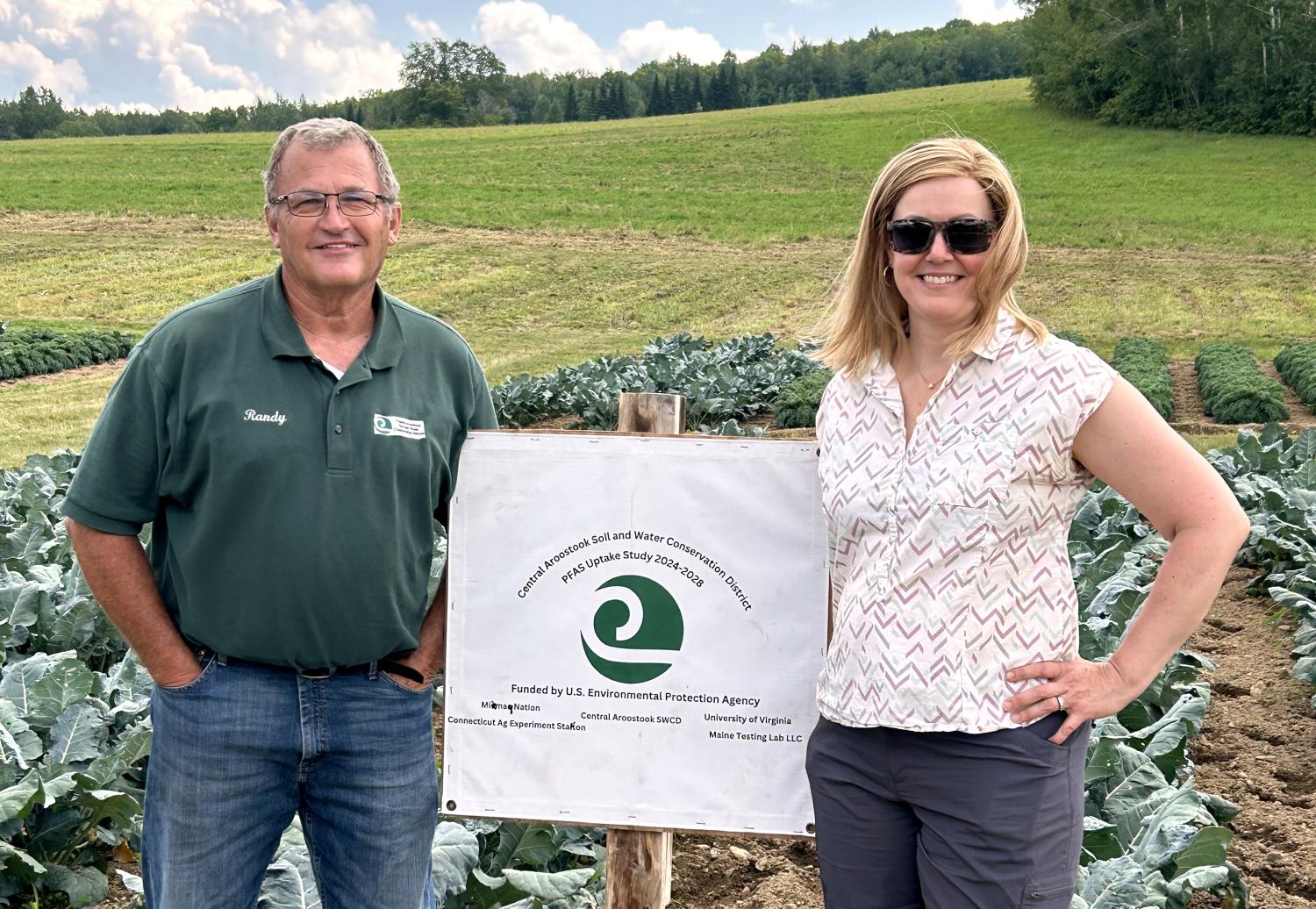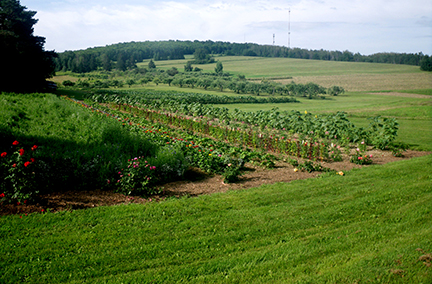
Finding the Future of Farming in Aroostook County: Randy Martin
By the time Randy Martin came back home from teaching at Gambia College in the West African country of The Gambia to purchase his family’s potato farm near Presque Isle in Aroostook County in 1983, he’d learned a few things about preserving soil and the importance of healthy farming practices.
“No potato production here anymore, much to my father’s dismay,” Martin said. “When I came home from Africa my father thought I’d be farming potatoes. Instead, I started planting trees on the potato fields. He thought I was totally out of my mind.”
It was the start of a 30-year career in agronomy and working to make farming practices more sustainable for all growers. His farm is now home to 30 research plots where he experiments and collects data that can help other farmers, and some additional acreage including an apple orchard, where he plants some vegetables and berries. Most of his produce ends up feeding neighbors or going to food banks.
“The Soil and Water Conservation District gave roughly 15-18 tons of fresh produce to Catholic Charities in Maine each summer,” he said.
Martin, Executive Director of Central Aroostook Soil and Water Conservation District, has worked in a variety of ways to mitigate soil depletion and help Aroostook County farmers expand their knowledge of viable crops outside of just potatoes. He works to share knowledge of non-traditional agricultural practices.
The Soil and Water Conservation District owns and rents out a no-till seeder that helps growers get seed in the ground while preventing excess runoff. “We have to get growers to stop fall plowing. That’s something their father did and their grandfather and their great-grandfather. And that’s not an easy feat.”
Martin uses wood chips and manure in the District’s research plots to increase nutrient levels in soil, and oversees plots growing crops that show potential ways to remove PFAS (which stands for “polyfluoroalkyl substances”) from the soil over time. “Some locations in southern Maine have had high concentrations from sewage sludge. In Aroostook, it’s from the former Loring Air Force Base, the firefighters’ foam that is now leeching off the base into the Lower Aroostook River Watershed.”
Martin irrigates research plots with water from multiple sources that have various concentrations of PFAS. It’s part of a four-year study, funded by the EPA, in conjunction with the University of Virginia and the Mi’Kmaq Nation in Presque Isle.
“I’m actually going and getting water from three different contaminated sources, bringing it back to the research farm, which is my farm—watering potatoes, broccoli, kale, and yellow beans, and monitoring what they take up and how much builds up in the soil.”
The Soil and Water Conservation District hopes to be able to find ways to harvest and mitigate PFAS and return soil to farmable land again. Martin is also involved in trying to revive the American chestnut by partnering with the University of New England to propagate a chestnut clone that’s 99 percent resistant to chestnut blight.
“I love wildlife, and I see what we’re doing to our soil. I know it takes 1,000 years to form one acre one inch deep of topsoil—weathering and whatnot,” he says.
He uses that knowledge to look forward and try to create ways for farmers like him to continue to thrive, and not just on potatoes.
“Aroostook County and the State of Maine are poised to be the breadbasket of the Northeast if we pull our head out of the sand. There are a lot of other crops that go hand in hand with potatoes that don’t need a lot of different equipment that we could be growing that would improve a grower’s bottom line. I hope in the future, we will be more aware of our soil, our soil health, and how the soil is responding to what we’re doing, and decrease the amount of chemical inputs without losing yield. It can be done.”